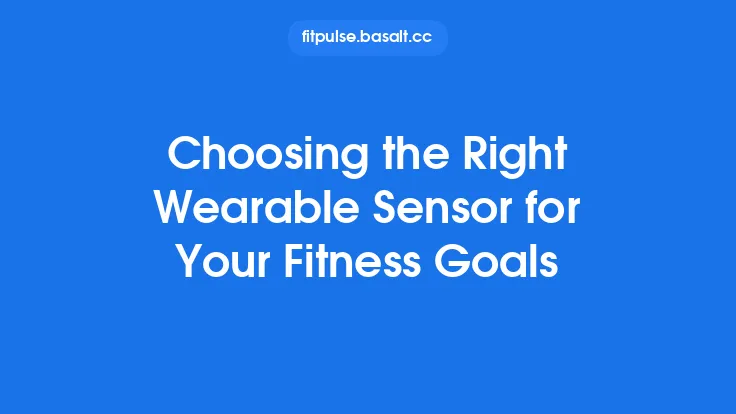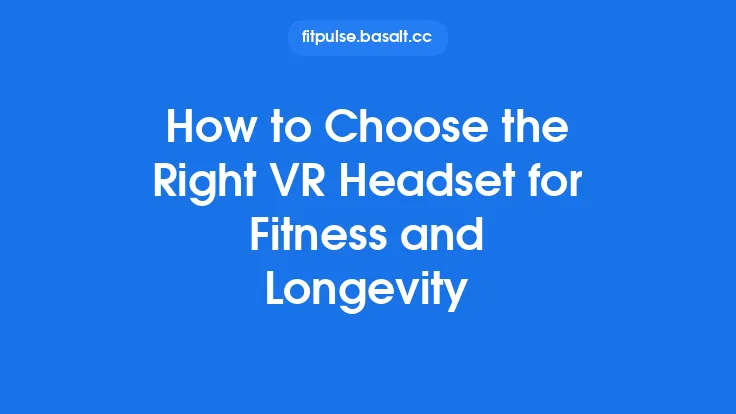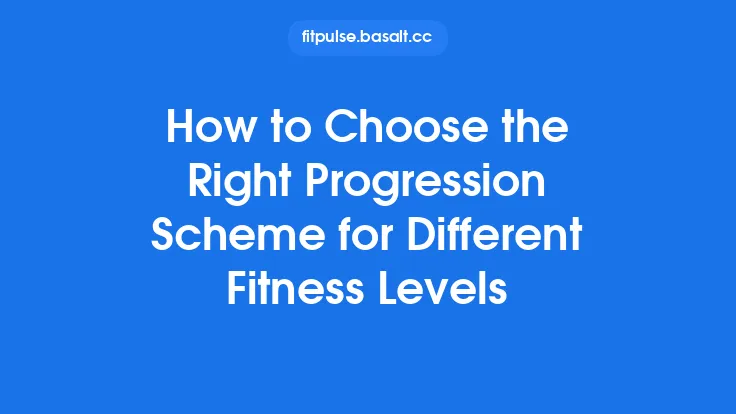Sleep and stress are two of the most powerful, yet often overlooked, drivers of overall health and athletic performance. Modern wearables and bedside gadgets promise to shine a light on how well you’re resting, how tightly you’re holding tension, and whether your recovery habits are on point. With a flood of options on the market—smartwatches, rings, clip‑on sensors, mattress‑integrated pads, and even smartphone‑only solutions—it’s easy to feel overwhelmed. The key to getting the most out of any device is not to chase the newest gadget, but to match the technology to your specific goals, lifestyle, and comfort level. Below is a step‑by‑step guide that walks you through the decision‑making process, helping you pick a sleep‑and‑stress tracker that truly serves you.
Define Your Personal Goals
Before you even glance at a product page, clarify why you want to track sleep and stress. Your objectives will dictate which features matter most.
| Goal | What to Prioritize |
|---|---|
| Improve overall sleep quality | Accurate sleep‑stage detection, comfortable wear, long battery life |
| Manage daily stress for mental well‑being | Continuous heart‑rate variability (HRV) monitoring, easy‑to‑read stress scores |
| Optimize training recovery | Integration with fitness apps, detailed recovery metrics, post‑exercise analytics |
| Track health trends over years | Robust data export options, cloud storage, reliable long‑term sensor stability |
| Stay within a tight budget | Low‑cost devices with essential metrics, minimal subscription fees |
Write down the top three goals you want the device to support. This list will become your reference point when you compare specifications later on.
Identify the Core Metrics You Need
Not every tracker measures the same set of data points. Knowing which metrics align with your goals prevents you from paying for unnecessary bells and whistles.
- Heart Rate (HR) & Resting Heart Rate (RHR): Baseline indicator of cardiovascular health and a building block for many stress algorithms.
- Heart‑Rate Variability (HRV): The most widely accepted proxy for autonomic nervous system balance; higher HRV generally signals better recovery and lower stress.
- Respiratory Rate: Helpful for detecting breathing irregularities that can affect sleep quality.
- Skin Temperature: Can hint at circadian rhythm shifts and environmental influences on sleep.
- Movement/Actigraphy: Determines sleep‑wake cycles and can flag restless nights.
- Stress Score or “Calm” Index: Usually a composite of HRV, HR, and sometimes galvanic skin response (GSR).
If your primary aim is stress management, prioritize devices that provide continuous HRV and a clear, user‑friendly stress score. If you’re more interested in sleep hygiene, look for detailed actigraphy and reliable sleep‑stage estimation.
Evaluate Sensor Technology and Accuracy
The reliability of the data hinges on the quality of the sensors. While no consumer device can match a clinical polysomnography lab, some technologies are demonstrably more consistent.
| Sensor Type | Typical Placement | Strengths | Limitations |
|---|---|---|---|
| Optical Photoplethysmography (PPG) | Wrist, finger, or ring | Good for HR and HRV; works in most everyday settings | Sensitive to motion artifacts; accuracy can dip during vigorous activity |
| Accelerometer (Actigraphy) | Wrist, clip‑on | Excellent for detecting movement, sleep‑wake transitions | Cannot differentiate sleep stages without additional data |
| Electrodermal Activity (EDA/GSR) | Wrist, finger | Directly measures skin conductance, a stress‑related signal | Requires good skin contact; may be affected by temperature or humidity |
| Infrared Bed Sensors | Mattress or pillow | Non‑intrusive; captures breathing and movement without wearing anything | Limited to home use; may miss subtle HRV changes |
When reading product specs, look for statements about clinical validation or independent testing. Devices that cite peer‑reviewed studies or have FDA clearance (even if “510(k) cleared”) generally have a higher baseline of accuracy.
Consider Form Factor and Wearability
A device that feels uncomfortable will quickly become a nuisance, leading to inconsistent data collection.
- Wrist‑Based Wearables: Most popular; easy to glance at metrics. Ideal if you already wear a smartwatch.
- Ring‑Style Trackers: Small, lightweight, and sit on a finger where pulse signals are strong. Great for people who dislike wrist bulk.
- Clip‑On Sensors: Attach to clothing or a strap. Useful for those who prefer not to wear anything on their body during sleep.
- Bed‑Integrated Pads: Completely non‑wearable, perfect for “set‑and‑forget” users, but require a dedicated sleep surface.
Try to find user reviews that comment on night‑time comfort. Some devices offer interchangeable bands or adjustable straps—these small details can make a big difference.
Battery Life and Charging Convenience
Sleep and stress tracking often require the device to be on 24/7. A short battery life can interrupt data streams and force you to remove the tracker during critical periods.
- Multi‑Day Batteries (5–7+ days): Most wrist wearables and rings fall here. Ideal for users who dislike daily charging.
- Rapid Charge (under 30 minutes for a full day): Helpful if you need to top up quickly.
- Wireless Charging: Adds convenience but may increase the device’s size or cost.
Check the manufacturer’s real‑world battery tests—advertised numbers can be optimistic, especially when using continuous HRV monitoring.
Data Ecosystem and App Experience
The raw numbers become useful only when they’re presented in a clear, actionable format.
- Dashboard Clarity: Look for intuitive graphs, trend lines, and simple “good/bad” indicators.
- Customizable Alerts: Ability to set thresholds for stress spikes or sleep deficits.
- Cross‑Platform Sync: Compatibility with iOS, Android, and desktop browsers ensures you can view data wherever you prefer.
- Third‑Party Integration: If you already use a fitness platform (e.g., Strava, MyFitnessPal) or a health hub (Apple Health, Google Fit), verify that the device can push data into those ecosystems.
A cluttered app can hide insights and discourage regular use. Many brands offer free trial periods for their premium analytics—take advantage of these to gauge usability.
Compatibility with Other Devices and Platforms
If you already own a smartwatch, a smart scale, or a heart‑rate monitor, you’ll want a tracker that plays nicely with your existing gear.
- Bluetooth Low Energy (BLE) Standards: Most modern devices use BLE, but some older gadgets may rely on classic Bluetooth.
- API Access: For tech‑savvy users, an open API allows you to export data to custom spreadsheets or third‑party dashboards.
- Ecosystem Lock‑In: Some brands (e.g., Apple Watch) tie data tightly to their own health app, limiting cross‑platform flexibility.
Make a quick inventory of your current devices and confirm that the new tracker can either replace or complement them without creating data silos.
Privacy, Security, and Data Ownership
Health data is sensitive, and the way a company handles it can be a deciding factor.
- Encryption: Data should be encrypted both in transit (when syncing to the cloud) and at rest (on the device and servers).
- User Consent: Look for clear privacy policies that explain what data is collected, how it’s used, and whether it’s shared with third parties.
- Data Portability: Ability to download your raw data (CSV, JSON) gives you control and future‑proofs your information.
- Regulatory Compliance: Companies operating in the EU must adhere to GDPR; U.S. firms may follow HIPAA guidelines for health data.
If privacy is a top concern, prioritize brands that have a strong track record of transparent data practices and that offer on‑device processing for key metrics.
Budget and Value Assessment
Price tags for sleep‑and‑stress trackers range from under $50 to several hundred dollars. Rather than focusing solely on the upfront cost, evaluate the total cost of ownership.
- Subscription Fees: Some platforms lock advanced analytics behind a monthly or annual subscription. Calculate the long‑term expense.
- Replacement Parts: Bands, rings, or sensor pads may wear out. Check the price and availability of replacements.
- Warranty Length: A longer warranty can offset a higher initial price, especially for devices with delicate sensors.
Create a simple spreadsheet: list the device price, any recurring fees, and expected replacement costs over a 2‑year horizon. Compare the total against the feature set you need.
Trial Periods, Return Policies, and Customer Support
Even with thorough research, the real‑world experience can differ. A flexible return policy lets you test comfort, data accuracy, and app usability without risk.
- 30‑Day Money‑Back Guarantees: Common among reputable brands.
- Responsive Support Channels: Live chat, email, and community forums can be lifesavers when troubleshooting sensor glitches.
- Firmware Updates: Regular software improvements can enhance accuracy and add features post‑purchase.
Before committing, read the fine print on returns and check user forums for common issues and how quickly the company addresses them.
Making the Final Decision: A Checklist
Use the following checklist to score each candidate device. Assign a value from 0 (doesn’t meet) to 5 (exceeds expectations) for each category, then total the scores.
| Category | Weight (1‑5) | Score (0‑5) |
|---|---|---|
| Alignment with personal goals | 5 | |
| Core metrics offered | 5 | |
| Sensor accuracy & validation | 4 | |
| Comfort & wearability | 4 | |
| Battery life & charging | 3 | |
| App usability & data visualization | 4 | |
| Ecosystem compatibility | 3 | |
| Privacy & security | 5 | |
| Total Cost of Ownership | 3 | |
| Return policy & support | 2 | |
| Overall Total | 38 | (Add your scores) |
A device that scores 30+ typically offers a balanced mix of accuracy, comfort, and value for most users. If a particular category is a deal‑breaker for you (e.g., privacy), give it extra weight in your personal calculation.
Final Thoughts
Choosing the right sleep and stress tracking device is less about chasing the flashiest spec sheet and more about matching technology to your unique objectives and daily routine. By clarifying your goals, understanding which metrics truly matter, and evaluating practical considerations such as comfort, battery life, and data privacy, you can invest in a tool that delivers consistent, actionable insights for years to come. Remember, the device is only a facilitator—the real transformation happens when you translate the data into healthier habits, better recovery strategies, and a more balanced lifestyle. Happy tracking!



